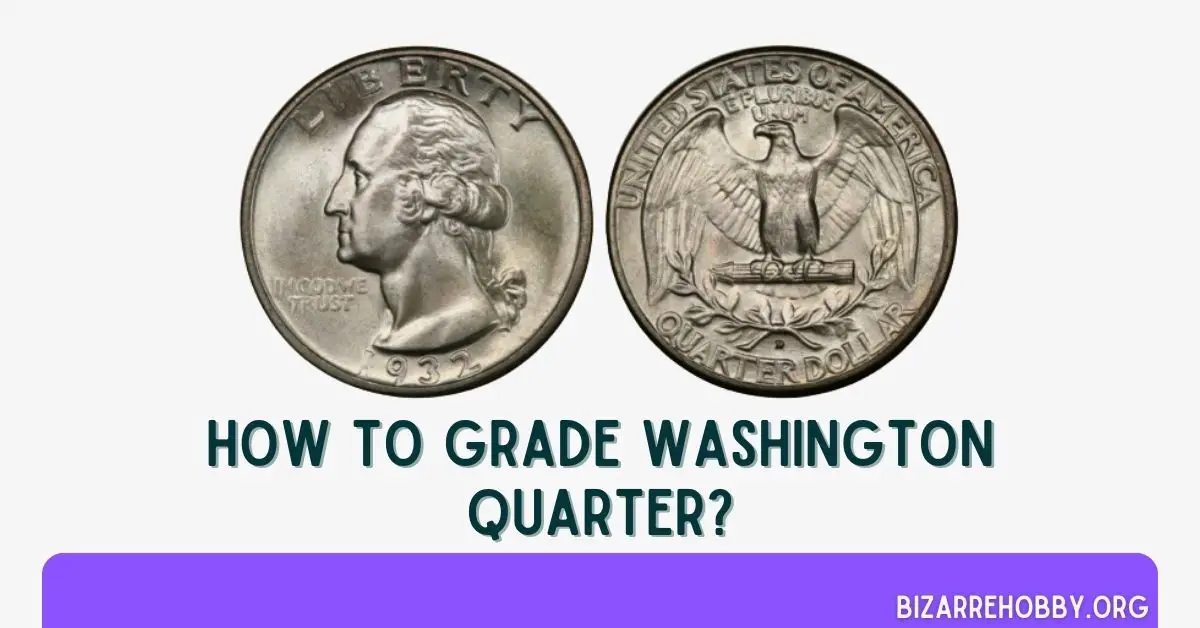A surprising design became a long-lasting U.S. coin. Minted in 1932 to celebrate George Washington’s 200th birthday, the Washington quarter wasn’t meant to be permanent. John Flanagan’s design, though not initially favored, was chosen and has been in circulation ever since. The value of these quarters depends on the metal they’re made of. Silver ones were minted before 1965, while later ones are a copper-nickel mix. Keep an eye out for special sets minted after 1999, as they can be valuable for collectors.
Grading Standards
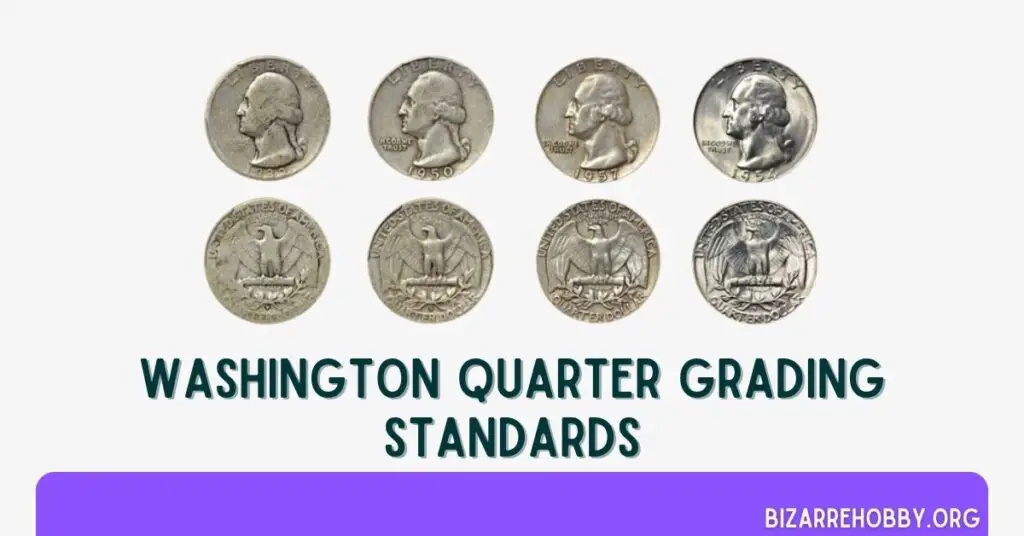
Coin grading isn’t as simple as it seems. While the Sheldon scale provides a basic guide (think A, B, C for students), tiny imperfections can significantly affect a coin’s value. This is especially true for rare, older coins.
The Sheldon scale uses numbers to rank coins. Low numbers (1-3) mean the coin is in rough shape and not really collectible. Higher numbers indicate the coin is collectible, but its value depends on many factors.
There are three main categories for collectible coins:
- Circulated (G4-EF49): These coins have been in use for a long time and show wear.
- About Uncirculated (AU50-AU59): These coins were used briefly and retain most of their original detail.
- Uncirculated (MS60-MS70): These coins were never released for circulation, but may have minor marks from storage.
Understanding Grades For Washington Quarter
Not all Washington quarters are created equal! The first step to grading them is figuring out what they’re made of. Silver and cupronickel quarters look different and have different values.
| Washington Quarter | |
| Face value | Twenty-five cents ($0.25) |
| Compound | Silver by 1965 |
| Cupronickel after 1965 | |
| Coin weight | Silver – 0.2 troy ounces (6.25 g) |
| Cupronickel – 0.2 ounces (5.67 g) | |
| Coin diameter | 24.30 mm (0,95669 inches) |
| Coin thickness | 1.75 mm (0,06870 inches) |
Silver quarters hold their value, even when worn. Made from a softer metal, they’re attractive to both collectors and investors. In contrast, cupronickel quarters are like any other modern coin. Only those in top condition are valuable, while worn ones are worth just their face value or even less.
How To Grade Washington Quarter?
Looking to grade your own coins? Start with two key things: how worn they are and how attractive the design looks. Then, get your magnifying glass out! Check for the date, mintmark (a tiny letter showing where it was made), and any original mint shine. Remember, even tiny mistakes during minting or damage from use can affect a coin’s value.
1. About Good (AG 3)
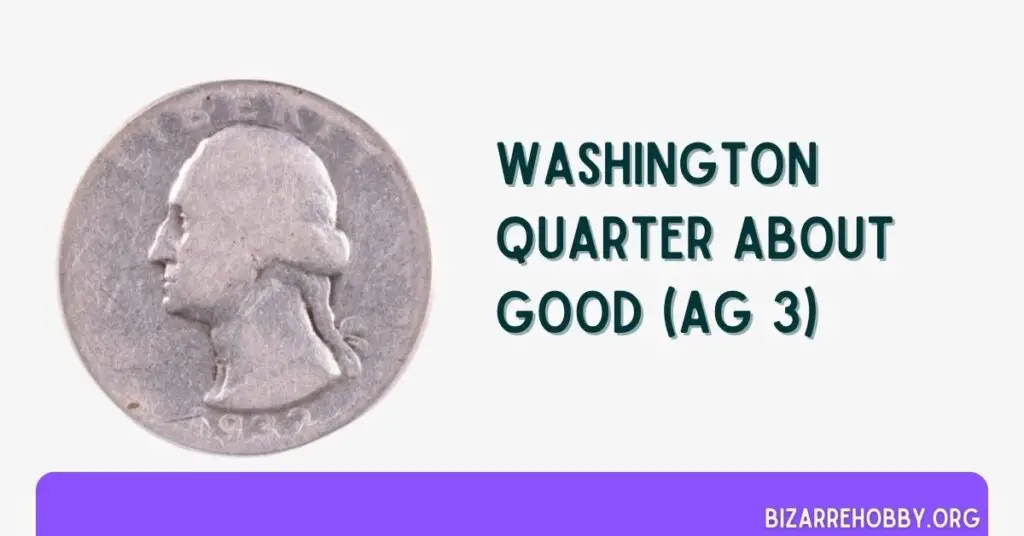
Heavily worn Washington quarters are past their prime for collectors. These coins will be noticeably smooth and lacking in the crisp details that make them valuable. The design elements will be faint, with the lettering around the edge weak and hard to read. Washington’s portrait on the front (obverse) might be reduced to a faint outline, with barely any hair details visible. Similarly, the eagle on the back (reverse) will be worn smooth, making it difficult to distinguish individual feathers.
However, there’s a silver lining for these worn quarters! If they’re made of silver, they still hold some value due to the precious metal content. While they won’t impress collectors for their design, the silver itself can be melted down and sold for its intrinsic worth. Cupronickel quarters, the more common type minted after 1964, wouldn’t be worth the effort as their metal composition has little value beyond face value.
2. Good (G4)
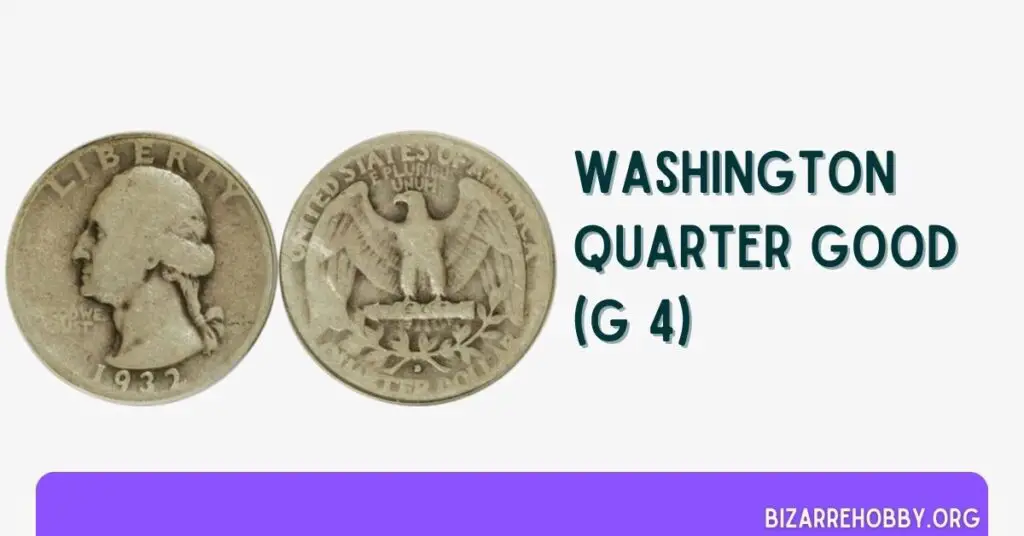
These Washington quarters show their age, but some details are still salvageable. Overall, the coins will be smooth from wear, with the edges appearing faint and not as sharply defined. However, unlike heavily worn quarters, some key details remain visible.
- On the front (obverse): While the portrait will be worn, at least an outline is still there. Some details, like the separation between the President’s jawline and neck, might be faint. The forehead and hairline might be flattened, but a few curls might still be recognizable.
- On the back (reverse): The eagle’s outline will be present, despite the wear. You might even be able to make out some lines on its wings and the leaves at the bottom of the wreath. All the lettering, though worn, should be complete, even if it merges slightly with the rim at the edge. The mintmark, while potentially a bit blotchy, should still be visible.
3. Very Good (VG 10, VG 8, And VG)
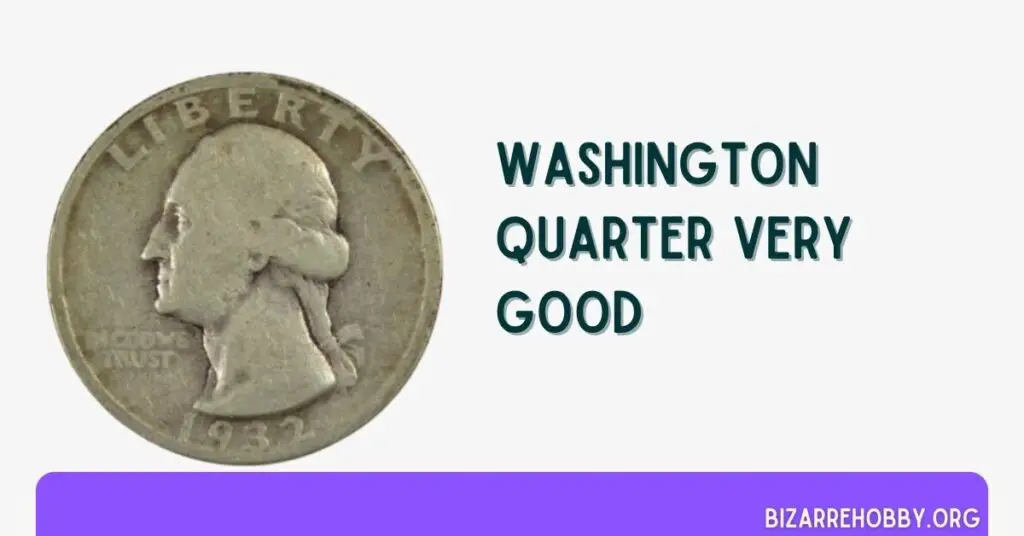
These Washington quarters have seen some circulation, but key features are still recognizable. While they’ll be smooth overall and lack the sharp details that excite collectors, the main design elements are still defined. The edge will be mostly intact but flattened from wear.
- On the front (obverse): Collectors might not find these as attractive due to the missing details. You’ll be able to see the President’s profile in outline form, but most finer details like facial features or hair texture will be gone, making the coin appear somewhat flat. The lettering around the edge, however, will be complete and clearly separated from the rim.
- On the back (reverse): The eagle will be a clear image, with roughly half of its wing feathers still distinct and recognizable. However, the bird’s chest and legs will likely be reduced to an outline, and the leaves in the wreath will be smooth and lack their finer details.
4. Fine (F 15, F. 12, And F)
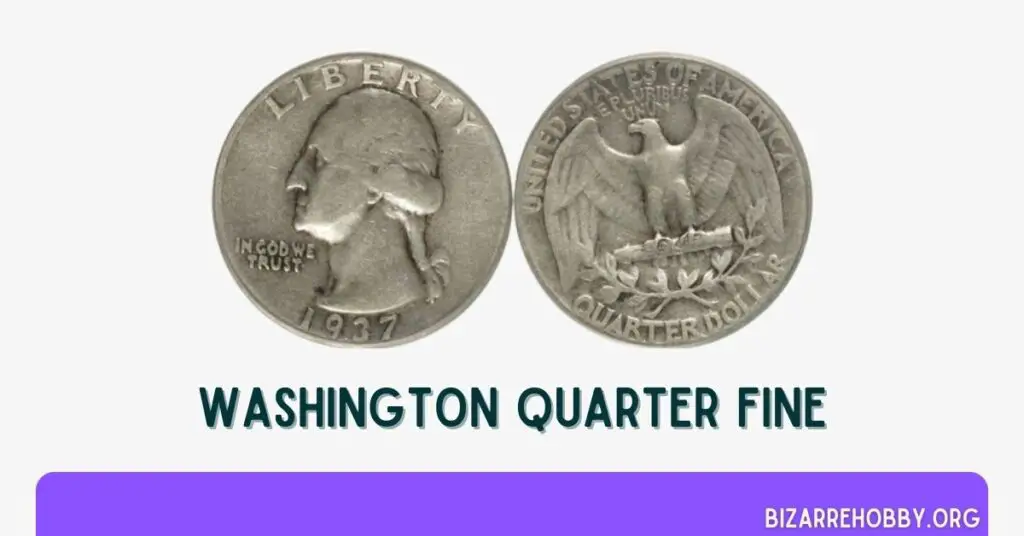
These Washington quarters have been in circulation, but they still hold some collector value. While they show moderate wear on both sides, the major design elements are still bold and easy to identify. This includes readable inscriptions like the motto, date, and mintmark. The rim is well-defined and sharp on both sides, especially noticeable on the reverse.
- On the front (obverse): Most of Washington’s hair will be worn flat and lack its original details. However, you can still make out the ponytail, ear, and curls behind it. The hairline separating his hair from the forehead might be barely visible. His cheek will likely be smooth and lack any original shine. The inscriptions will be recognizable, but the Latin motto might be weaker and harder to read.
- On the back (reverse): The eagle will be clearly visible inside a sharp rim. You should be able to see about 75% of the wing feathers, although they might be worn and lack finer details. The breast and leg feathers will likely be completely worn away.
5. Very Fine (VF 35, VF 30, VF 25, VF 20, And VF)
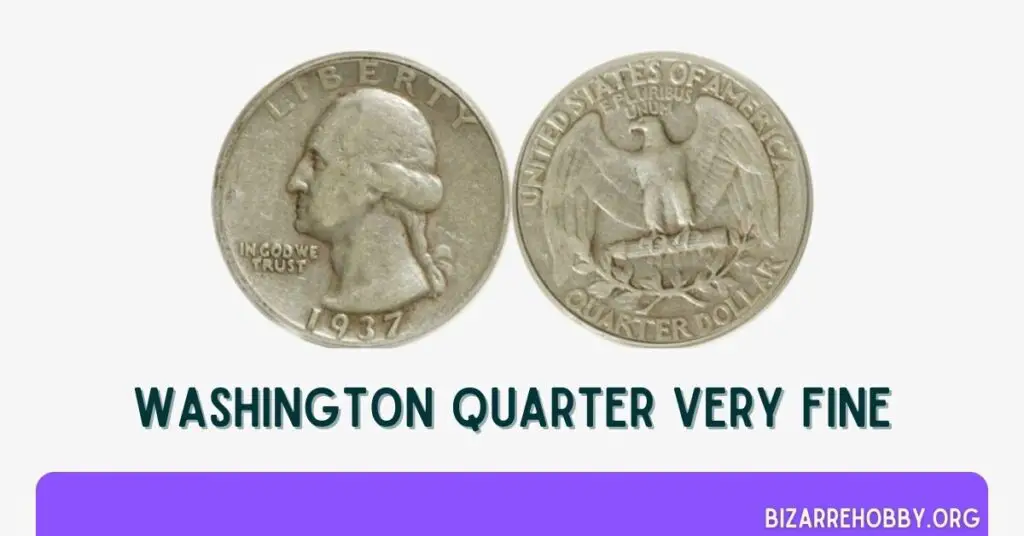
These Washington quarters are in good condition and appealing to collectors. While they’ve been in circulation and show some wear, it’s moderate and doesn’t significantly affect the overall look. The highest points of the design, which are most prone to wear, might be slightly flattened. The rim is raised and complete around the entire coin. All inscriptions, including lettering and dates, are fully separated from the edge.
- On the front (obverse): Washington’s hairline will be slightly visible, an improvement over lower grades. The hair behind his ears will also show more detail compared to more worn coins. You might see some wear spots on his face, including the forehead, head, cheek, ear, and jawline.
- On the back (reverse): The eagle will have some wear, with its breast and legs being smooth and lacking fine details. However, some of the feathers will still be visible and reasonably defined. The legs’ outline will be clear, but without the sharper details that make them stand out in higher grades.
6. Extra Fine (EF 45 And EF 40)

These Washington quarters are in excellent shape and highly sought-after by collectors. While they may show some signs of wear, it’s very minor and primarily on the raised areas of the design that are most susceptible to wear. In some cases, you might even find traces of the original mint luster preserved in the deeper parts of the design.
- On the front (obverse): The key feature to look for is Washington’s hair. The hairline along his forehead will be sharp and well-defined. However, there might be some minor scratches that detract slightly from the overall beauty. Since Washington quarters have been minted for a long time, older coins in this “Extremely Fine” grade can be especially valuable.
- On the back (reverse): These coins will show only light wear on the highest points of the design, particularly the eagle’s breast. Most of the feathers on the wings will be clearly recognizable, and the arrows in the bundle will be separate and distinct. You might even be able to see traces of the original mint luster on the surface of the coin.
7. About Uncirculated (AU 58, AU 55, And AU 50)

The holy grail for collectors: Uncirculated Washington quarters! These coins are the cream of the crop when it comes to preserved circulated coins. While they technically did spend some time in circulation, they were handled very little and retain an attractive appearance. Most importantly, they will still have most of their original mint luster on the surface, which gives them a fresh, minty look.
- On the front (obverse): There might be some slight wear visible on the highest points of the coin, like Washington’s ear and curls, hinting at a brief time in circulation. However, the vast majority of the mint luster will still be present. Details like the ponytail, bow, lettering, and date will all be crisp and undamaged.
- On the back (reverse): The eagle will look nearly flawless, with maybe just a hint of wear on the breast and leg feathers. The olive twigs and arrows will be sharp and well-defined. While you might see some minor surface marks from storage or handling (called bag marks), an impressive 75% or more of the mint luster will still be visible.
8. Mint State (From MS 60 To MS 70)

Not all Uncirculated coins are created equal! The Sheldon scale uses a range of grades (MS 60 to MS 70) for Mint State coins, with MS 70 being the absolute best. The key difference between these top grades is how flawless the surface is.
True Mint State Washington quarters are like brand new. Their design elements will be perfectly intact, even on the raised areas most prone to wear. They’ll have their entire mint luster gleaming on the surface, giving them a beautiful shine. The strike (the force with which the metal was pressed during minting) will be sharp and flawless.
Final Thoughts
Minted in 1932 to celebrate George Washington’s birthday, Washington quarters were originally intended to be a one-year commemorative coin. However, their design has endured and they’re still minted today, with a few modifications along the way.
These coins can be valuable for collectors, but it depends on their condition and metal composition. Silver quarters are generally worth more than cupronickel ones. Carefully grading each coin is important to determine its worth.
